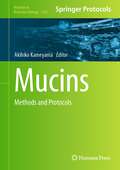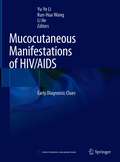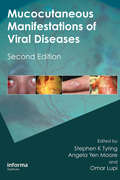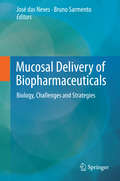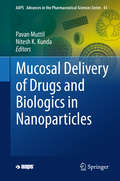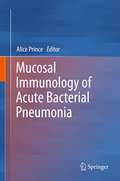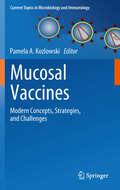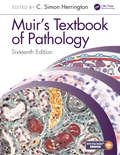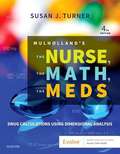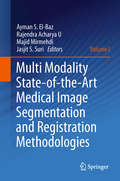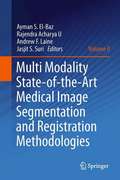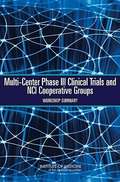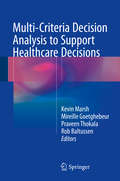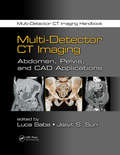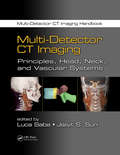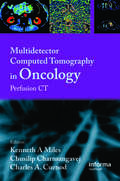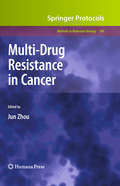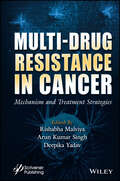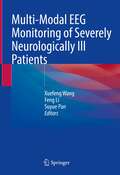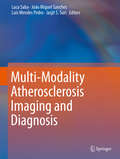- Table View
- List View
Mrs Winterbottom Takes a Gap Year: The brand new feel-good read from the author of THE SINGLE LADIES OF JACARANDA RETIREMENT VILLAGE
by Joanna NellA witty and touching tale about mismatched expectations and living life in the moment, from the author of cherished ebook bestseller, The Single Ladies of Jacaranda Retirement VillageIt's never too late for the adventure of a lifetime . . .Heather Winterbottom has worked side by side with her husband as GPs in their idyllic rural practice for over forty years. But as the time comes to hang up their stethoscopes, the Winterbottoms discover that they have rather different visions of retirement . . . Heather dreams of exploring the Greek Islands, of escaping the shackles of her routine life and embracing an exciting new adventure. Alan dreams of growing his own vegetables.When things come to a head at a family lunch, Heather announces that she has decided to take a year off. From her old life, from her marriage - from Alan. Alone in beautiful Greece, Heather embarks on her very own odyssey - complete with peak experiences, pitfalls and temptations. But what if coming home is the biggest adventure yet? ***Praise for Joanna Nell's uplifting and heartwarming novels:'Takes readers on a sweet journey. A warm-hearted read from Nell, who tells engaging stories with older protagonists' The Australian'Tender and funny' Woman's Weekly'Whip-smart dialogue, humour and sarcasm . . . highly addictive' Sun Herald'The Tea Ladies is a delight. Warm characters and observations and great pace' AMANDA HAMPSON'Another funny, warm-hearted read' Herald Sun'Lively and whimsical' Sydney Morning Herald(P)2023 Hodder & Stoughton Limited
Mrs Winterbottom Takes a Gap Year: The brand new feel-good read from the author of THE SINGLE LADIES OF JACARANDA RETIREMENT VILLAGE
by Joanna NellIt's never too late for the adventure of a lifetime . . .Heather Winterbottom has worked side by side with her husband as GPs in their idyllic rural practice for over forty years. But as the time comes to hang up their stethoscopes, the Winterbottoms discover that they have rather different visions of retirement . . . Heather dreams of exploring the Greek Islands, of escaping the shackles of her routine life and embracing an exciting new adventure. Alan dreams of growing his own vegetables.When things come to a head at a family lunch, Heather announces that she has decided to take a year off. From her old life, from her marriage - from Alan. Alone in beautiful Greece, Heather embarks on her very own odyssey - complete with peak experiences, pitfalls and temptations. But what if coming home is the biggest adventure yet? ***Praise for Joanna Nell's uplifting and heartwarming novels:'Takes readers on a sweet journey. A warm-hearted read from Nell, who tells engaging stories with older protagonists' The Australian'Tender and funny' Woman's Weekly'Whip-smart dialogue, humour and sarcasm . . . highly addictive' Sun Herald'The Tea Ladies is a delight. Warm characters and observations and great pace' AMANDA HAMPSON'Another funny, warm-hearted read' Herald Sun'Lively and whimsical' Sydney Morning Herald
Muchas vidas, muchos maestros
by Brian L. WeissEl doctor Brian Weiss, jefe de psiquiatría del hospital Mount Sinai de Miami, relata en este libro una asombrosa experiencia que cambió su vida por completo. Una de sus pacientes, Catherine, recordó bajo hipnosis varias de sus vidas pasadas y pudo encontrar en ellas el origen de muchos de sus traumas actuales. Catherine se curó, pero ocurrió algo todavía más importante: logró ponerse en contacto con los Maestros, los espíritus superiores que habitan los estados entre dos vidas. Ellos le comunicaron importantes mensajes de sabiduría y de conocimiento. Este relato, profundamente conmovedor, punto de encuentro entre ciencia y metafísica, es de obligada lectura en un mundo devastado por grandes sufrimientos y en continua búsqueda de un nuevo sentido espiritual.
Muchísimo más: Las conmovedoras memorias de mi encuentro con el amor, la lucha contra la adversidad y la definición de la vida en mis propios términos (Atria Espanol)
by Zulema Arroyo FarleyMuchísimo más combina lo mejor de La última lección y Un momento extraordinario en este relato conmovedor de cómo Zulema Arroyo Farley, La Médium Latina, vive su vida al máximo, rehusando permitir que una forma rara de cáncer o cualquier otra enfermedad crónica determine su destino.En la cuarta cita de Zulema con su ahora esposo, la nueva pareja creó una “Lista de vida” llena de aventuras que compartirían juntos, incluyendo aventuras de paracaidismo, viajes lujosos alrededor del mundo y como recolectores de vino, viajando a las regiones vitivinícolas para conocer a sus productores de vino favoritos. Sumamente exitosa y enamorada, Zulema estaba viviendo un cuento de hadas. Pero, a dos años de casarse, la Lista de vida tomó una urgencia sorprendente cuando le diagnosticaron sarcoma, una forma de cáncer extremadamente rara e incurable, junto a una serie de otras condiciones médicas complejas y misteriosas. Zulema, impávida ante los desafíos de su salud, confió en sí misma y en quienes la rodeaban para reunir el coraje necesario para enfrentar sus enfermedades de frente, sin olvidar nunca acoger el espíritu de la Lista de vida con cada día que pasa. A pesar del dolor físico y mental insoportable, los reveses y las luchas personales, Zulema está decidida a experimentar cada segundo de la vida. En este nuevo capítulo, ha revelado un secreto que había conservado toda la vida: Ella es una médium psíquico. Después de años viendo, oyendo y sintiendo presencias que otros no podían ver, ella ha aprendido a confiar en ellos en sus momentos más difíciles y utiliza su don en servicio de todo a quien le concierne. Sus guías espirituales y sabiduría de la vida ayudarán a sus lectores a acoger su visión más importante: Siempre hay mucho más que vivir, que amar, que aprender y que crear.
Mucins: Methods and Protocols (Methods in Molecular Biology #2763)
by Akihiko KameyamaThis volume explores the latest advancements in mucin research. The chapters in this book are organized into 8 parts and cover a wide range of topics such as mucin extraction, isolation, physicochemical property analysis, and experimental methods. The chapters also discuss the origins of mucins in jellyfish, feces, saliva and salivary glands, bronchi, stomach, and cervical tract; organic synthesis of peptides glycosylated at specific sites; analysis of mucin gene expression and methylation-specific electrophoresis of genes; imaging of mucin networks by AFM; and experimental methods using supported molecular matrix electrophoresis. Written in the highly successful Methods in Molecular Biology series format, chapters include introductions to their respective topics, lists of the necessary materials and reagents, step-by-step, readily reproducible laboratory protocols, and tips on troubleshooting and avoiding known pitfalls.Cutting-edge and comprehensive, Mucins: Methods and Protocols is a valuable resource for researchers who want to obtain in-depth insight on how to more thoroughly conduct mucin research in their laboratories.
Mucocutaneous Manifestations of HIV/AIDS: Early Diagnostic Clues
by Li He Yu-Ye Li Kun-Hua WangThis book introduces a number of HIV/AIDS cases with mucocutaneous lesions. HIV/AIDS can manifest a variety of skin lesions due to immunological disorder, opportunistic infections and tumors always occur primarily with skin lesions. The cases included in this book reflect the diseases spectrum and evolution of mucocutaneous lesions at different stages before and after AIDS antiretroviral therapy (ART) as well. This book consists of nine chapters, including fungal, viral, bacterial, parasitic, neoplastic, inflammatory diseases, syphilis and ART-induced diseases, etc. More than 300 cases and 600 photos of representative and important clinical significances are selected, showing the different clinical characteristics of the same disease under different immune status. Clinical photos are combined with clear and concise medical history along with the discussion on it, by which the readers can understand why skin lesions can be used as the early diagnostic clues to HIV/AIDS infection. Moreover, every chapter summarizes the similarity and characteristics of each type of skin diseases, which outlines and explains why they are AIDS-related mucocutaneous lesions.
Mucocutaneous Manifestations of Viral Diseases: An Illustrated Guide to Diagnosis and Management
by Omar Lupi Angela Yen Moore Stephen K TyringExpertly distinguish viral diseases from other infectious or noninfectious diseases and choose the most effective treatment with this definitive Second Edition.The only existing text to address issues of skin manifestations of viral disease, Mucocutaneous Manifestations of Viral Diseases explores the diagnosis, treatment, and pathogenesis of viral
Mucosal Delivery of Biopharmaceuticals
by Bruno Sarmento José Das NevesBiopharmaceutical medicines, the newest class of therapeutics, are quite heterogeneous and include a range of molecules such as proteins, peptides, vaccines and nucleic acids, with use in virtually all therapeutic fields (e. g. cancer and infectious diseases, vaccination, metabolic dysfunctions) and diagnostics. This edited book gives a concise and up-to-date overview of the biological features justifying the use of different human mucosa as delivery routes for biopharmaceuticals, the technological strategies that have been followed so far regarding the optimization of mucosal potentialities as well as the challenges that arise with the advent of new biopharmaceutical drugs and alternative means of administration. Following a brief introduction, the first section addresses general aspects of the biology of mucosal tissues and their unique aspects toward beneficial or deleterious interaction with biopharmaceuticals and their delivery systems. The second part reviews the different delivery strategies that have recently been investigated for different mucosal sites. The third section describes the development and clinical applications of drug delivery systems and products enclosing biopharmaceuticals for mucosal delivery, with a focus on the most successful case studies of recent years. The last section briefly centers on relevant aspects of the regulatory, toxicological and market issues of mucosal delivery of biopharmaceuticals. Scientists and researchers in the fields of drug delivery, material science, biomedical science and bioengineering as well as professionals, regulators and policy makers in the pharmaceutical, biotechnology and healthcare industries will find in this book an important compendium of fundamental concepts and practical tools for their daily research and activities.
Mucosal Delivery of Drugs and Biologics in Nanoparticles (AAPS Advances in the Pharmaceutical Sciences Series #41)
by Pavan Muttil Nitesh K. KundaNanotechnology has revolutionized the approach to designing and developing novel drug delivery systems. The last two decades have seen a great interest in the use of nanotechnology to offer efficient ways of delivering new and existing drugs and macromolecules. The focus of this book is the application of nanotechnology to deliver drugs and biological agents by the mucosal routes of administration i.e. nasal, pulmonary, buccal, and oral routes. It provides an overview of nanotechnology in drug delivery with a description of different types of nanoparticles, methods of preparation and characterization, and functionalization for site-specific drug delivery. The emphasis is on the use of nanoparticles in treating various cancers and infectious diseases. It broadens the use of nanoparticles by including biologics, including vaccines and immunotherapies, apart from drugs and acknowledges the concerns around the potential toxicity of nanoparticles to the host; several chapters will discuss the biodistribution of these nanoparticles when mucosal routes of administration are employed. Further, the interaction of nanoparticles with the host’s immune cells is discussed. Moreover, it reviews the regulatory aspects of nanotechnology in product development, especially when delivered by the mucosal route of administration. Lastly, discusses the challenges and opportunities to manufacture nanoparticles on an industrial scale. This book is the first of its kind to focus on the design, development and delivery of nanoparticles when administered by different mucosal routes.
Mucosal Immunology of Acute Bacterial Pneumonia
by Alice PrinceIn contrast to the substantial literature that focuses upon innate immune signaling in the gut, there is remarkably less known about the response of the airway to bacterial pathogens. The purpose of this book will be to review the current status of theunderstanding of the pathogenesis of acute bacterial pneumonia, slanted toward the mucosal immunology of these infections. It will describe, in general, the signaling cascades that control the proinflammatory response to bacterial infection in the lung. How innate immune signaling is orchestrated in response to specific common airway pathogens is addressed, targeting Staphylococus aureus (including MRSA), Streptococcus pneumoniae and Klebsiella pneumoniae. By describing the general immunological responses to conserved bacterial components and then detailing how specific organisms cause infection, this book provides a targeted but comprehensive review of this important topic.
Mucosal Vaccines
by Pamela A. KozlowskiThis volume is focused on the development of vaccines which generate immune effectors capable of blocking mucosal entry or peripheral pathogen spread. A critical first step in the design of mucosal vaccines is the selection of administration route. Not all mucosal immunization routes are created equally when it comes to eliciting immune responses in multiple body compartments. This subject and situations when a mucosal route may not be required for vaccine delivery are reviewed here with an emphasis on the sublingual immunization route, which may offer a safer alternative to the nasal route for induction of broadly disseminated immune responses. External host defenses that inhibit entry of microorganisms at mucosal surfaces also pose obstacles to the efficient internalization of mucosally-applied vaccines. Transcutaneous immunization with appropriate adjuvants and permeation enhancers can induce mucosal immune responses and may be advantageous for bypassing these luminal barriers. Other chapters describe strategies for enhancing uptake of mucosal vaccines, for instance through targeted delivery to antigen-sampling M cells, construction of virus-like particles which mimic natural pathogens, addition of mucoadhesives or formulation as nanoparticles. Topics include edible vaccines as well as plant-based production of subunit or particulate vaccines that could be administered by any route. Dry powder vaccines that could be insufflated or directly applied to mucosal surfaces may be particularly ideal for mass vaccination in developing countries. The manufacture, stability and efficacy of powder formulations is comprehensively reviewed. We conclude with chapters on two of the greatest challenges facing mucosal vaccine development: human immunodeficiency virus and bioterrorist agents. This monograph highlights progress and information that should prove invaluable for the development of contemporary vaccines that prevent infection by these and other mucosal pathogens.
Mueller-Matrix Tomography of Biological Tissues and Fluids: Digital Image Processing and Analysis Techniques (SpringerBriefs in Applied Sciences and Technology)
by Zhengbing Hu Iryna V. Soltys Yuriy A. Ushenko Oleksandr V. Dubolazov M. P. Gorsky Oleksandr V. Olar Liliya Yu. TrifonyukThis book presents experimental investigations and digital image processing, highlighting the interaction of polarized radiation with phase-inhomogeneous and optically anisotropic biological layers. The promising and efficient use of vector-parametric description of the formation of polarization-inhomogeneous object fields is noted. Applications of a set of Mueller-matrix polarimetry methods are highlighted. The book includes- structural and logical scheme of multi-parameter (singular, interference and layer-by-layer Stokes-polarimetric), polarization-correlation study of the structure of distributions of the number of singularities, maps of local contrast of interference distributions and layer-by-layer maps of microscopic polarization azimuth and ellipticity; determination of relationships between changes in the magnitude of statistical parameters characterizing polarization-correlation distributions and pathology of prostate tumors.
Muir's Textbook of Pathology: Sixteenth Edition
by C. Simon HerringtonThis classic text sets a standard in this subject by outlining the scientific aspects that underlie pathological processes, relating these to specific organ systems and placing all in a context that the student of medicine or pathology can appreciate, understand and enjoy. The clearly defined and easy-to-follow structure, enhanced by numerous photographs and explanatory line diagrams, focuses on core material without neglecting novel concepts and up-to-the minute detail. A one-stop-shop in pathology, it reflects fully the integration of pathology into clinical teaching whether system or problem-based, and will take the student right through medical school and beyond to postgraduate training.
Mulholland's The Nurse, The Math, The Meds: Drug Calculations Using Dimensional Analysis
by Susan TurnerMulholland’s The Nurse, The Math, The Meds, 4th Edition helps you overcome any math anxiety you may have by clearly explaining how to use dimensional analysis to minimize drug calculation errors. It shows how to analyze and set up problems, estimate a reasonable answer, and then evaluate the answer for accuracy. But first, a review of basic math ensures that you remember essential math skills. Updated by nursing educator Susan Turner, this edition includes plenty of practice exercises to help you understand and master each aspect of dimensional analysis.
Multi Modality State-of-the-Art Medical Image Segmentation and Registration Methodologies. Volume 1
by Jasjit S. Suri Majid Mirmehdi Ayman S. El-Baz Rajendra Acharya UWith the advances in image guided surgery for cancer treatment, the role of image segmentation and registration has become very critical. The central engine of any image guided surgery product is its ability to quantify the organ or segment the organ whether it is a magnetic resonance imaging (MRI) and computed tomography (CT), X-ray, PET, SPECT, Ultrasound, and Molecular imaging modality. Sophisticated segmentation algorithms can help the physicians delineate better the anatomical structures present in the input images, enhance the accuracy of medical diagnosis and facilitate the best treatment planning system designs. The focus of this book in towards the state of the art techniques in the area of image segmentation and registration.
Multi Modality State-of-the-Art Medical Image Segmentation and Registration Methodologies: Volume II
by Jasjit S. Suri Ayman S. El-Baz Rajendra Acharya U Andrew F. LaineWith the advances in image guided surgery for cancer treatment, the role of image segmentation and registration has become very critical. The central engine of any image guided surgery product is its ability to quantify the organ or segment the organ whether it is a magnetic resonance imaging (MRI) and computed tomography (CT), X-ray, PET, SPECT, Ultrasound, and Molecular imaging modality. Sophisticated segmentation algorithms can help the physicians delineate better the anatomical structures present in the input images, enhance the accuracy of medical diagnosis and facilitate the best treatment planning system designs. The focus of this book in towards the state of the art techniques in the area of image segmentation and registration.
Multi-Center Phase III Clinical Trials and NCI Cooperative Groups: WORKSHOP SUMMARY
by Institute of Medicine of the National AcademiesThe NCI-sponsored cooperative groups have made important contributions to improving treatment for many types of cancer, including breast, ovarian, colorectal, and childhood cancers. Cooperative group research has been instrumental in establishing innovative treatments that improve outcomes and quality of life. Despite these successes, the Cooperative Group Program has faced a number of challenges that threaten its effectiveness. To address this problem, the National Cancer Policy Forum (NCPF) convened a workshop titled "Multi-Center Phase III Clinical Trials and NCI Cooperative Groups" in Washington, DC, on July 1-2, 2008. The purpose of the workshop was to outline the challenges that the public clinical cancer research enterprise faces, and to identify possible solutions to these challenges.
Multi-Criteria Decision Analysis to Support Healthcare Decisions
by Kevin Marsh Mireille Goetghebeur Praveen Thokala Rob BaltussenRepresenting the first collection on the topic, this book builds from foundations to case studies, to future prospects, providing the reader with a rich and comprehensive understanding of the use of multi-criteria decision analysis (MCDA) in healthcare. The first section of the collection presents the foundations of MCDA as it is applied to healthcare decisions, providing guidance on the ethical and theoretical underpinnings of MCDA and how to select MCDA methods appropriate to different decision settings. Section two comprises a collection of case studies spanning the decision continuum, including portfolio development, benefit–risk assessment, health technology assessment, priority setting, resource optimisation, clinical practice and shared decision making. Section three explores future directions in the application of MCDA to healthcare and identifies opportunities for further research to support these.
Multi-Detector CT Imaging: Abdomen, Pelvis, and CAD Applications
by Martin GardnerDevelopments in CT technology during the last 20 years have impressively improved its diagnostic potentialities. Part of a two-volume set that covers all aspects of CT imaging, Multi-Detector CT Imaging: Abdomen, Pelvis, and CAD Applications contains easily searchable clinical specialty chapters that provide specific information without need of an
Multi-Detector CT Imaging: Principles, Head, Neck, and Vascular Systems
by Jasjit S. Suri Luca SabaDevelopments in CT technology during the last 20 years have impressively improved its diagnostic potentialities. Part of a two-volume set that covers all aspects of CT imaging, Multi-Detector CT Imaging: Principles, Head, Neck, and Vascular Systems contains easily searchable clinical specialty chapters that provide specific information without need
Multi-Detector Computed Tomography in Oncology: CT Perfusion Imaging
by Kenneth A Miles Charles-André CuenodThis new text-atlas focuses on anatomy and procedural strategy for perfusion CT imaging in the diagnosis and management of cancer. It will use a combination of pictures and schematic diagrams that show how this new modality can be used to assess anatomy and guide therapeutic interventions. It begins with an introductory section discussing the state
Multi-Drug Resistance in Cancer
by Jun ZhouWith the devastating complication of cancer cells becoming simultaneously resistant to many structurally and mechanistically unrelated drugs, the efficacy of chemotherapeutic management of cancer often becomes severely limited. In Multi-Drug Resistance in Cancer, leading researchers in the field provide comprehensive and up-to-date reviews of multidrug resistance mechanisms, from over-expression of ATP-binding cassette drug transporters such as P-glycoprotein, multidrug resistance-associated proteins, and breast cancer resistance protein, to the drug ratio-dependent antagonism and the paradigm of cancer stem cells. The extensive volume also includes strategies to overcome multidrug resistance, from the development of compounds that inhibit drug transporter function to the modulation of transporter expression, as well as techniques for detection and imaging of drug transporters, methods for investigation of drug resistance in animal models, and strategies to evaluate the efficacy of resistance reversal agents. As a volume in the highly successful Methods in Molecular BiologyTM series, this work provides the kind of detailed description and implementation advice that is crucial for getting optimal results. Authoritative and cutting-edge, Multi-Drug Resistance in Cancer offers a state-of-art collection of reviews and methods for both basic and clinician investigators who are interested in the vital study of cancer multi-drug resistance mechanisms and reversal strategies.
Multi-Drug Resistance in Cancer: Mechanism and Treatment Strategies
by Arun Kumar Singh Rishabha Malviya Deepika YadavMULTI-DRUG RESISTANCE IN CANCER The book details the mechanisms underlying multi-drug cellular resistance and the targets of novel chemotherapeutic agents. Cancer is a major killer all over the world. Even with all the progress made, chemotherapy is still the mainstay of modern cancer treatment. The progression of the cellular defeat of numerous independent anticancer drugs in terms of their chemical structure is a major barrier to successful chemotherapy. Multi-drug resistance (MDR) is a term for the fact that most cancer patients exhibit this phenomenon. According to the numbers, drug resistance carries the blame for 90% of cancer patient deaths. Refractory cancer and tumor recurrence are common outcomes of prolonged chemotherapy. Because of the prevalence of drug-resistance mutations, the difficulty of treating tumors increases and the therapeutic efficacy of drugs decreases. Multi-Drug Resistance in Cancer: Mechanism and Treatment Strategies contains nine chapters that cover topics such as: studying the mechanics of resistance to drugs by autophagy; studies to delineate the role of efflux transporters; expression of drug transporters; resistance to targeted therapies in breast cancer; advances in metallodrug driven combination treatment for cancer; and use of natural agents for the overcoming of cancer drug resistance. The book aims to provide the latest data on the mechanisms of cellular resistance to anticancer agents currently used in clinical treatment. It provides a better understanding of the mechanisms of MDR and targets of novel chemotherapy agents which should guide future research concerning new effective strategies in cancer treatment. Audience This book is written for pharmaceutical and biomedical scientists and researchers at both the bench and in the clinic who are interested in the mechanisms and strategies for overcoming cancer’s multi-drug resistance.
Multi-Modal EEG Monitoring of Severely Neurologically Ill Patients
by Feng Li Xuefeng Wang Suyue PanThis book provides practical information on applications of multi-modal EEG monitoring in patients with severely neurologically diseases. The First part systematically introduces the modern EEG techniques, and multi-modal EEG monitoring system for severe neurological illness. In the second part, identification of EEG artifacts and interpretation of common abnormal EEG patterns is presented. Accompanying more than 50 typical cases and 200 EEG records, the following chapters discusses EEG’s changes and clinical significance in coma, ischemic-hypoxic encephalopathy, status epilepsy, Creutzfeldt-Jakob disease, traumatic brain injury, and other diseases in details. In addition, application of multi-modal EEG in monitoring intracranial pressure and predicting suicide risk is also included. It will be a valuable reference for professionals in neurology, neurosurgery, emergency care, psychiatry, technology specialists of EEG and senior nurses with basic EEG monitoring knowledge.
Multi-Modality Atherosclerosis Imaging and Diagnosis
by Jasjit S. Suri João Miguel Sanches Luca Saba Luís Mendes PedroStroke is one of the leading causes of death in the world, resulting mostly from the sudden ruptures of atherosclerosis carotid plaques. Understanding why and how plaque develops and ruptures requires a multi-disciplinary approach such as radiology, biomedical engineering, medical physics, software engineering, hardware engineering, pathological and histological imaging. Multi-Modality Atherosclerosis Imaging, Diagnosis and Treatment presents a new dimension of understanding Atherosclerosis in 2D and 3D. This book presents work on plaque stress analysis in order to provide a general framework of computational modeling with atherosclerosis plaques. New algorithms based on 3D and 4D Ultrasound are presented to assess the atherosclerotic disease as well as very recent advances in plaque multimodality image fusion analysis. The goal of Multi-Modality Atherosclerosis Imaging, Diagnosis and Treatment is to fuse information obtained from different 3D medical image modalities, such as 3D US, CT and MRI, providing the medical doctor with some sort of augmented reality information about the atherosclerotic plaque in order to improve the accuracy of the diagnosis. Analysis of the plaque dynamics along the cardiac cycle is also a valuable indicator for plaque instability assessment and therefore for risk stratification. 4D Ultrasound, a sequence of 3D reconstructions of the region of interest along the time, can be used for this dynamic analysis. Multimodality Image Fusion is a very appealing approach because it puts together the best characteristics of each modality, such as, the high temporal resolution of US and the high spatial resolutions of MRI and CT.




